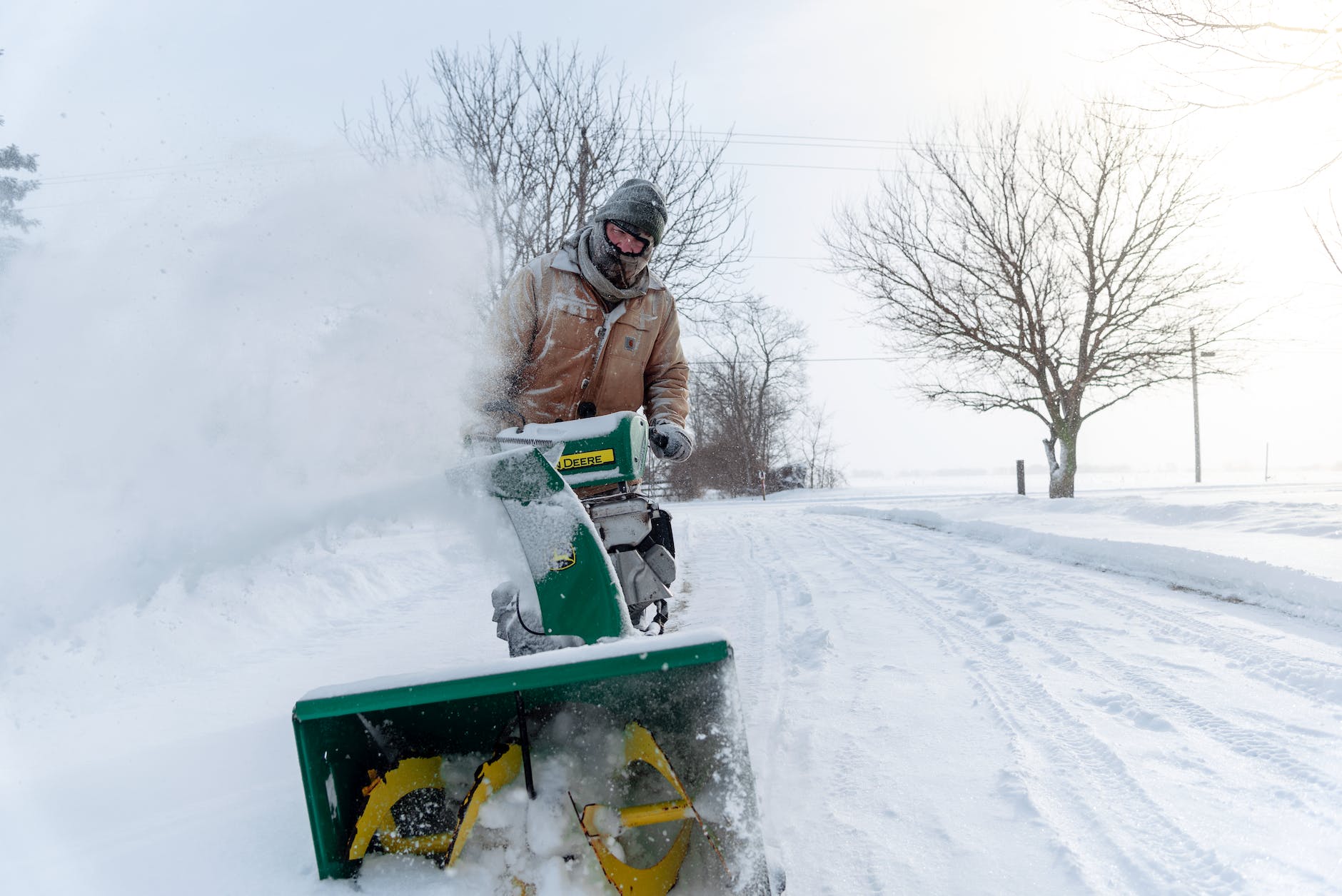It’s important to know how to lubricate a snowblower. There aren’t a lot of parts that need lubricating, but doing so will prolong the life of your machine.
Tools Needed (Commissions Earned)
Lubricating the Engine
This should be obvious by now, but engines need lubrication. The internal components create heat due to the friction of them rubbing. Without the proper lubrication, these parts can seize and become damaged.
I recommend changing the engine oil annually. It’s not overly expensive, and it’s simple to do.
The best way is to run the machine for a few minutes to heat the oil up. This will allow it to drain more thoroughly. Plus, in the event that there’s sludge caked on the bottom of the oil pan, this will stir it up into the oil to drain as well.
From there, just fill the oil back up to the full mark on the dipstick. It’s important to not overfill the oil as that can also cause problems.
Lubricating the Augers
Most augers have grease fittings on them. If you have a single stage snowblower, there might be one for each auger. For a two stage snowblower, there might be an additional fitting on the impeller.
Simply use a grease gun and pump general purpose grease into the fitting until it starts coming out the sides.
If the fitting isn’t taking grease, I like to use a grease fitting rejuvenator to clear the fitting, and then grease it.
Lubricating the Wheel Axles
A lot of snowblowers have grease fittings on the wheel hub. If so, grease it just like the previous fittings on the auger. In the event that your machine does not have grease fittings, you can drill and tap threads to install one.
Or, if you don’t want to go that route, just remove the wheel from the axle and apply a generous coating of white lithium grease. Then, reinstall the wheels.
Lubricating the Drive Disc/Axle
If you remove the bottom pan from under the machine you’ll see an axle that drives the wheels. Traveling on this axle is a circular disc with a rubberized coating. This is the drive disc; depending on the position it’s in determines what gear and speed the snowblower will travel.
I like to clean this axle thoroughly with some brake clean or carb cleaner, and then I apply white lithium grease to the axle. This ensures smooth shifting between the gears.
Lubricating the Gearbox
Two stage snowblowers will have a gear box that transfers power from the impeller shaft out to the augers. Since there are gears inside, they need to be lubricated as well.
If you’re doing regular maintenance, just ensure that the gearbox is full of oil. Top off if necessary with some 90w gear oil.
However, if you just bought a used machine or if you haven’t done regular maintenance, the best bet is to clean out the gearbox before applying fresh gear oil.
To do this, you have to remove the auger and impeller from the housing. Then, remove the bolts on the gearbox to open it up. Clean the oil caked grease out thoroughly, put it all back together, and fill it with fresh gear oil.
Lubricating the Discharge Chute Cable
I also like to lubricate the cable for the discharge chute. For this I like to use a spray white lithium grease. Lubricating the cable helps to ensure that the discharge chute can rotate easily.
I’ll spray the cable and then rotate the chute back and forth. I’ll also spray a bit on the chute itself where it connects to the auger housing. As an added bonus, the lubrication helps prevent ice buildup on the cable.
Lubricating the Cables
If you look on your machine, there’s a cable for the drive engagement, the auger engagement, and possibly a throttle cable as well. I like to use a cable lubricator at the top end of the cable and spray some WD-40.
The cable lubricator ensures that the oil will seep down into the cable instead of just spraying on the outside. Lubricating the cable will promote longevity for your machine and help prevent the cable from rusting to the jacket internally.
Lubricating the Auger/Impeller Housing and Discharge Chute
While this isn’t really lubrication for the machine, it’s more like lubrication for the snow. Any added friction from the auger or impeller housing and/or the discharge chute will allow snow to accumulate.
It won’t travel out as freely, and eventually you’ll end up with a plugged chute.
To prevent this, make sure that all surfaces are clean and clear of rust. Paint any bare metal that may have worn down from previous seasons.
Once all surfaces have been painted, you can use a produce like DuPont’s nonstick aerosol to coat everything. This silicon based lubricant helps to prevent snow from clogging up in the chute.
Recap
It took more words in this article than I thought it would to explain how to lubricate a snowblower. In reality, the whole process shouldn’t take more than a half an hour, unless of course you’re painting bare metal.
The good news is that if you regularly lubricate your machine, then further maintenance will be easier and faster.
Did I forget anything? Let me know in the comments below!
As an Amazon Associate I earn from qualifying purchases.

4 thoughts on “How to Lubricate a Snowblower (Guide)”